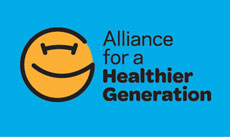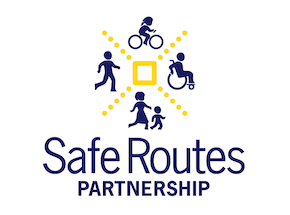 On the heels of our Greater Washington, DC area regional Complete Streets policy, the National Complete Streets Coalition (NCSC) released their
On the heels of our Greater Washington, DC area regional Complete Streets policy, the National Complete Streets Coalition (NCSC) released their
Resource Library
This webinar from December 9, 2014 explores the process used to create Complete Streets in a variety of southern settings.
 During the opening plenary session at ProWalk/ProBike in Long Beach, Suja Lowenthal, PhD, a council member from Long Beach, addressed the attendees. She’s a passionate advocate, sharing many ideals so many of us do, but I strongly agreed when she declared that our communities are not bike-friendly until mothers with children feel comfortable taking to the streets. That is such an importa
During the opening plenary session at ProWalk/ProBike in Long Beach, Suja Lowenthal, PhD, a council member from Long Beach, addressed the attendees. She’s a passionate advocate, sharing many ideals so many of us do, but I strongly agreed when she declared that our communities are not bike-friendly until mothers with children feel comfortable taking to the streets. That is such an importa
 October is such a great time of year.Everywhere I look lately, no matter what city or town I am visiting, I see more children and families walking and bicycling to school, the park, other destinations and just for fun.
October is such a great time of year.Everywhere I look lately, no matter what city or town I am visiting, I see more children and families walking and bicycling to school, the park, other destinations and just for fun.
 The Alliance for a Healthier Generation, founded by the American Heart Association and the William J. Clinton Foundation, was formed in 2005 as a response to the dramatic increase in prevalence of childhood obesity across the nation.
The Alliance for a Healthier Generation, founded by the American Heart Association and the William J. Clinton Foundation, was formed in 2005 as a response to the dramatic increase in prevalence of childhood obesity across the nation.
 The Transportation Improvement Program (TIP) is a region’s approved list of specific transportation projects mandated by federal law. It serves as a multi-year financial schedule for obligating federal funds to state and local transportation projects. The TIP contains funding information for all modes of transportation including bicycle and pedestrian projects.
The Transportation Improvement Program (TIP) is a region’s approved list of specific transportation projects mandated by federal law. It serves as a multi-year financial schedule for obligating federal funds to state and local transportation projects. The TIP contains funding information for all modes of transportation including bicycle and pedestrian projects.
 I recently had the privilege of speaking at the Fairfax County Bike Summit. It was the first Bike Summit in the county. Fairfax County has come a long way through the work of the Fairfax Advocates for Better Bicycling.
I recently had the privilege of speaking at the Fairfax County Bike Summit. It was the first Bike Summit in the county. Fairfax County has come a long way through the work of the Fairfax Advocates for Better Bicycling.
Florida has had great success with Safe Routes to School under SAFETEA-LU, with more than 235 applications ($68.8 million) being funded. The average Safe Routes to School project funded was $292,766. There has been a call for infrastructure applications each fall through spring. Spring 2012 ended the 6th call for projects. These projects will be in the 2017 work program. The average return on these projects was an increase of 22 percent of children walking to and from school. The program works!
 There are a number of exciting Safe Routes to Schools initiatives taking place around the state of Mississippi and the momentum continues. The Mississippi Department of Transportation’s Safe Routes to School program has opened up its fourth funding cycle.
There are a number of exciting Safe Routes to Schools initiatives taking place around the state of Mississippi and the momentum continues. The Mississippi Department of Transportation’s Safe Routes to School program has opened up its fourth funding cycle.
The School Site Audit will help determine walking and bicycling conditions on or adjacent to school property. Similar to the School Site Audit, the Neighborhood Site Audit is designed to help you evaluate the walking and bicyclingconditions by inventorying neighborhood intersections, streets, and sidewalks used by the students.
This report describes how student school travel in the U.S. changed from 1969through 2009 using information from the 2001 and 2009 National HouseholdTravel Survey (NHTS) and the 1969 and 1995 Nationwide Personal TransportationSurveys (NPTS).
 The Wake County Child Safety Action Network (WakePedNet)is a varied group of individuals who share a similar goal: to raise awareness of child pedestrian injury concerns in Wake County, North Carolina to share and plan activities, and to build greater capacity to prevent pedestrian crashes and injuries.
The Wake County Child Safety Action Network (WakePedNet)is a varied group of individuals who share a similar goal: to raise awareness of child pedestrian injury concerns in Wake County, North Carolina to share and plan activities, and to build greater capacity to prevent pedestrian crashes and injuries.
 In an effort to continue the momentum from her Let’s Move! campaign, First Lady, Michelle Obama and television star Rachel Ray visited Mississippi on February 27, 2013. Mississippi was all too proud to be a part of the third anniversary of this movement and even happier to report progress over the past three years.
In an effort to continue the momentum from her Let’s Move! campaign, First Lady, Michelle Obama and television star Rachel Ray visited Mississippi on February 27, 2013. Mississippi was all too proud to be a part of the third anniversary of this movement and even happier to report progress over the past three years.
This fact sheet provides highlights from the 2009 National Household Travel Survey released in 2010.
 At the National Bike Summit this year, Douglas Meyer from Bernuth & Williamson presented some fascinating results about what Congressional allies and opponents think about bicycling.
At the National Bike Summit this year, Douglas Meyer from Bernuth & Williamson presented some fascinating results about what Congressional allies and opponents think about bicycling.
School districts that adopt school bicycling or walking policies ensure that transportation safety rules for the district are consistent and standardized. Policies developed at this jurisdictional level can also help lay the groundwork for better and safer behaviors. This document provides a model school bicycling policy.
 Spring brings a new season for the State Network Project in New Jersey. As you have likely heard, I will be leaving the Safe Routes Partnership this month. But like I welcome the warmer and longer days, I also look forward to new opportunities and stronger partnerships. I am moving onto a program at Montclair State University that still has ties to the SRTS movement.
Spring brings a new season for the State Network Project in New Jersey. As you have likely heard, I will be leaving the Safe Routes Partnership this month. But like I welcome the warmer and longer days, I also look forward to new opportunities and stronger partnerships. I am moving onto a program at Montclair State University that still has ties to the SRTS movement.
This report indicates how Safe Routes to School is reducing carbon emissions and air pollutants.
 Last week, the Southern California Association of Governments (SCAG) convened the annual Regional Conference and General Assembly (GA) in Palm Desert for two days. The GA is a yearly convening of elected officials from across Southern California to celebrate the accomplishments of the past year.
Last week, the Southern California Association of Governments (SCAG) convened the annual Regional Conference and General Assembly (GA) in Palm Desert for two days. The GA is a yearly convening of elected officials from across Southern California to celebrate the accomplishments of the past year.

